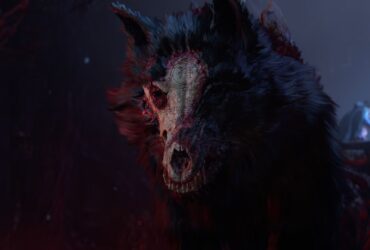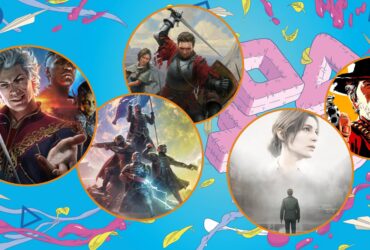I attended the Game Developers Conference in San Francisco last month, and AI was the unfortunate air we breathed while walking the Moscone Center show floor. Nvidia was laser-focused on the tech, and Ark: Survival Evolved‘s Aquatica expansion got an AI-generated trailer that no one wants to take credit for.
As I talked to developers, I heard some AI boosterism, pointing to where the industry is at the moment. Industry power players believe that AI is poised to be the future. Whether it actually will be or not remains to be seen, but as a person in a creative job, it’s frightening to see the tech sector intent on cultivating a technology they promise will take away, well, creative jobs.

Related
This Cute Frog Game Is Bringing Breath Of The Wild To Platformers
Big Hops’ gameplay is way more emergent and systems-driven than most 3D platformers.
Take-Two And Nintendo Get AI Right
Which is why it’s so heartening to hear important people in the games industry take shots at generative AI. I pumped my fist when Nintendo president Shuntaro Furukawa was asked about the tech’s potential and said that “[Nintendo has] decades of know-how in creating optimal gaming experiences for our customers, and while we remain flexible in responding to technological developments, we hope to continue to deliver value that is unique to us and cannot be achieved through technology alone.”
Seeing the people with their hands on the levers of power respond to AI with a noncommittal shrug, as lukewarm a pushback as it is, is invigorating when so much of the world wants creatives to believe that they’re on the chopping block because of the technology’s ascendance. In the same way, it’s a breath of fresh air to see Strauss Zelnick, the CEO of GTA 6 publisher Take-Two, say that AI can’t be the future because, by necessity, it’s “backward-looking.”
“I’m not worried about AI creating hits, because it’s built on data that already exists,” Zelnick said. “It’s backward-looking. Big hits are forward-looking and, therefore, need to be created out of thin air. Being the most creative means not just thinking outside the box; it means there is no box.”
The Transformative Power Of “Yes, And…”
Zelnick’s sentiments are true in my experience.. One of the biggest paradigm shifts in gaming since I’ve been following the industry has been the rise of the battle royale game. When PUBG first arrived on the scene in 2017, there was really nothing else like it. Hearing a podcaster I followed describe the experience of sitting in a plane with a bunch of players chanting on mic as they waited to parachute onto an island below was borderline surreal. It sounded like absolutely nothing else I’d played. Hearing someone else describe an experience so unmoored from other games at the time immediately had me interested.
Now, as anyone following PUBG at the time knows well, Fortnite ended up becoming a massive hit by pivoting to a battle royale mode and beating PUBG to consoles.
Fortnite was also boosted by being free-to-play. PUBG wasn’t.
Realistically, this seems like the role that AI-generated games could play, quickly responding to trends that human developers have set. But I share Zelnick’s opinion that AI isn’t going to set trends because it fundamentally is responsive, not visionary. Corporations may want to implement AI for cost-cutting reasons, but players will always want things that surprise them.
What Balatro And Pulp Fiction Have In Common
That’s why the pitch that, in the future, you’ll simply tell an AI what you want to play (or watch or read) doesn’t hold much weight for me. People don’t want what they already know they want; they want what they don’t know they want yet. It’s why Quentin Tarantino took the indie film scene by storm in the ’90s by remixing kung fu and Westerns and crime films with his own idiosyncratic spin. It’s why Balatro took the indie game scene by storm last year by combining poker and roguelikes with a charming CRT-ified art style.
That’s quite different from the AI images inundating social media recently, that take user photos and reimagine them with a Studio Ghibli coat of paint. An AI booster might be tempted to say that this trend means ‘human artists are cooked’. But the Ghibli AI images are drawing on human-created work: the photos you feed in, and Studio Ghibli’s art. All of the originality is coming from the human element. The derivative parts of the equation are all coming from the AI.
No one could have predicted Tarantino or LocalThunk. They borrowed from art that already existed, but added enough of their personality to transform it, perfectly capturing the mood of the moment before anything indicated that would be the mood of that moment. This is what real artists are able to contribute, and what simply can’t be replicated by AI or an algorithm. The sum total of all that a person has experienced, however messy or ill-defined, is what makes art unique, interesting, and able to capture our attention. The humanity is not optional. It’s hard to quantify, but it suffuses the entirety of an artist’s work.
AI can’t do that. It has no transformative self to add.

Next
Heretic’s “No Generative AI” Disclaimer Should Become Industry Standard
The credits let you know where the filmmakers stand, and I want to see more of that.












Leave a Reply